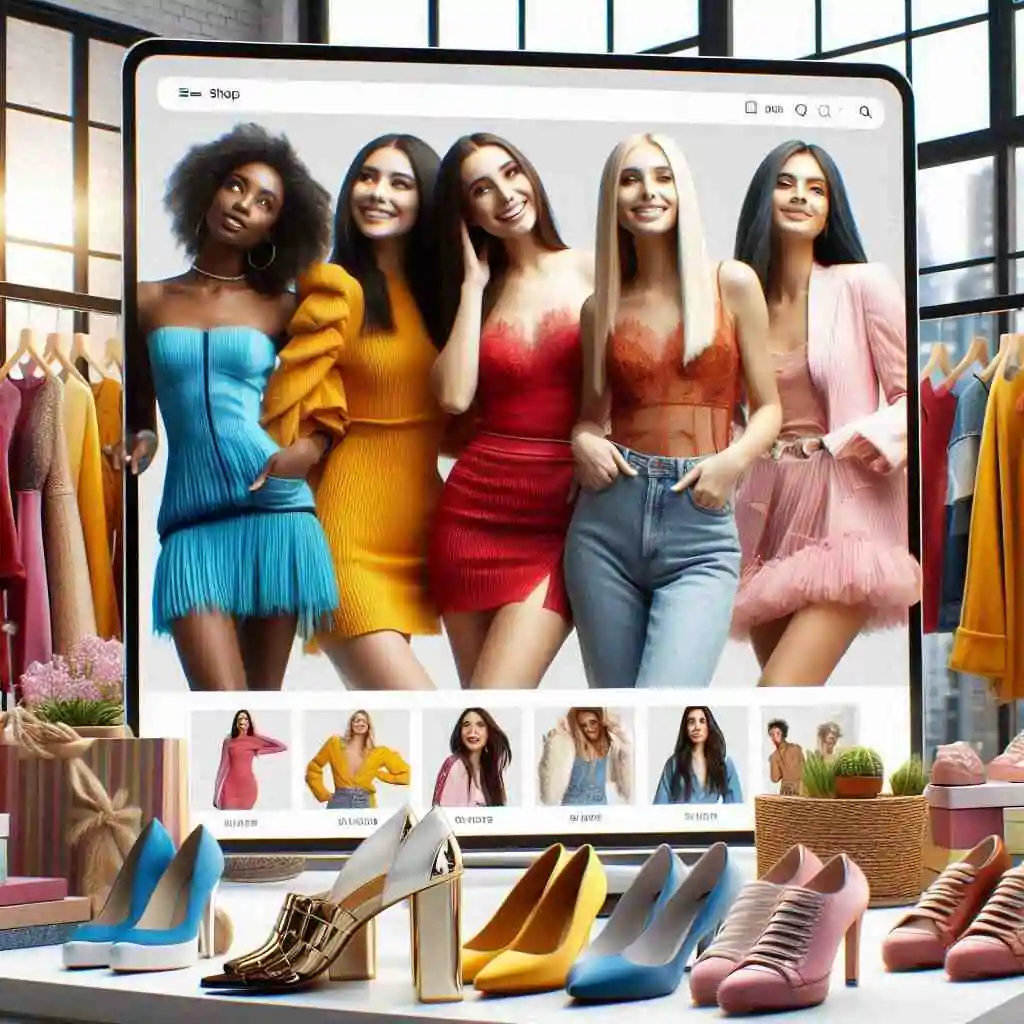The digital age has transformed the way we shop. Online shopping is no longer a mere trend; it has become a staple in our daily lives. With just a few clicks, consumers can access countless products from around the world—all from the comfort of their homes. This shift towards web&store models reflects changing consumer behavior and preferences.
Retail web&store now find themselves navigating uncharted waters as they adapt to this evolving landscape. The rise of e-commerce has reshaped not only how people buy but also how businesses operate. As shoppers increasingly turn to online platforms, traditional retail spaces must rethink their strategies to stay relevant and competitive.
Join us as we explore what this means for both consumers and retailers alike. Let’s dive into the influence of online shopping on brick-and-mortar establishments and discover how they’re adapting to thrive in this new era!
The Impact on Retail Stores
Retail stores have felt the seismic shifts brought on by online shopping. Foot traffic has dwindled as consumers find it easier to browse from their devices. The convenience of purchasing without leaving home is hard to compete with.
Brick-and-mortar shops are now reassessing their roles in the shopping experience. Some are pivoting towards creating immersive environments that can’t be replicated online. This includes personalized service and unique in-store events that draw customers away from their screens.
Price competition also intensifies, forcing traditional retailers to rethink pricing strategies. Many must balance maintaining profit margins while staying attractive compared to e-commerce giants offering discounts.
Moreover, inventory management has changed dramatically. Retailers are adopting technology solutions for real-time tracking and stock optimization, ensuring they meet customer demand effectively.
The landscape is evolving rapidly, prompting retailers to innovate continuously or risk falling behind in this new era dominated by web&store dynamics.
Advantages of Online Shopping for Consumers
Online shopping offers unparalleled convenience. Consumers can browse through countless products without leaving their homes. This saves time and energy, making it easier to compare items swiftly.
Another significant advantage is the diversity of options available. Shoppers can access stores from around the globe, finding unique items that may not be present in local shops. This variety enhances the overall shopping experience.
Additionally, online platforms often feature competitive pricing. Many retailers provide discounts and special deals exclusive to their websites. With just a few clicks, consumers can snag bargains they wouldn’t typically find in physical stores.
The ability to read reviews also plays a crucial role in online shopping decisions. Customers benefit from feedback left by previous buyers, helping them make informed choices before purchasing an item.
Online shopping allows for flexibility with delivery options. Whether it’s same-day shipping or scheduled deliveries, consumers have control over how and when they receive their purchases.
Challenges Faced by Traditional Retail Stores
Traditional retail stores grapple with several challenges in the age of digital shopping. The most pressing issue is foot traffic decline. Shoppers increasingly prefer the convenience of browsing online from the comfort of their homes.
Price competition also poses a significant hurdle. Online retailers often offer lower prices due to reduced overhead costs, making it tough for brick-and-mortar shops to compete without sacrificing profit margins.
Inventory management can be another obstacle. Traditional stores may struggle to keep up with consumer demand while ensuring they have popular items in stock, unlike their online counterparts who can quickly adjust inventory levels.
Customer experience plays a crucial role too. Consumers expect seamless and personalized service that some traditional retailers find hard to deliver consistently in-store compared to tailored online experiences.
These challenges create an urgent need for innovation among physical retailers as they navigate this evolving landscape.
Strategies for Retail Stores to Compete with Online Shopping
Retailers must embrace technology to stay relevant. Implementing mobile apps can enhance customer engagement and streamline shopping experiences.
Offering exclusive in-store promotions or loyalty programs also draws customers away from their screens. A personal touch, like trained staff ready to assist, creates a memorable experience that online platforms struggle to replicate.
Creating an inviting atmosphere is key too. Comfortable spaces for browsing can entice shoppers to linger longer, leading to increased sales.
Additionally, leveraging social media for targeted marketing helps attract local patrons who may prefer the instant satisfaction of shopping in person over waiting for deliveries.
Collaboration with other businesses can foster community support and promote cross-shopping opportunities. Retailers should not shy away from integrating e-commerce elements into physical locations, such as click-and-collect services or kiosks for easy ordering while on-site.
The Future of Retail: Blending Online and In-Store Experiences
The future of retail lies in the seamless blending of online and in-store experiences. As consumers increasingly seek convenience and personalization, retailers must adapt to these evolving demands.
Imagine walking through a store while your phone alerts you to special offers tailored just for you. This is not science fiction; it’s happening now. Retailers are leveraging technology to create interactive shopping environments that enhance consumer engagement.
Augmented reality (AR) apps allow customers to visualize products before buying. Virtual fitting rooms can help eliminate uncertainty when choosing clothing sizes or styles.
Moreover, click-and-collect options bridge the gap between digital and physical shopping. Shoppers can browse online but pick up their purchases at local stores, saving time without sacrificing choice.
As traditional boundaries blur, successful retailers will prioritize creating cohesive experiences that draw on the strengths of both realms, paving the way for innovative customer interactions across platforms.
Adapting to the Changing Landscape
The retail landscape is evolving at an unprecedented pace. Stores must now embrace flexibility and innovation to stay relevant.
Digital integration is essential. Retailers are increasingly implementing technology that enhances the shopping experience. Mobile apps, virtual try-ons, and personalized recommendations can draw customers in.
Data analytics plays a crucial role too. Understanding customer preferences enables retailers to tailor their offerings effectively. This approach fosters loyalty and encourages repeat visits.
Emphasizing sustainability has become vital as well. Consumers today prefer brands that prioritize eco-friendliness. Retail stores adapting their practices to align with these values can gain a competitive edge.
Collaborative spaces within stores may also enhance engagement. Hosting events or community gatherings creates a unique atmosphere that online platforms can’t replicate.
By being proactive and responsive, traditional retail can not only survive but thrive amidst the rise of online shopping options like web&store solutions.
The Future of Retail Stores
The future of retail stores is poised for transformation. As technology advances, consumer expectations evolve. Shoppers now seek convenience and personalization.
Automation and AI will play significant roles in shaping these experiences. Imagine smart shelves that track inventory or virtual assistants guiding customers through stores. This tech integration can enhance efficiency.
Sustainability also emerges as a key factor. Retailers are increasingly focusing on eco-friendly practices, from sourcing products to reducing waste in-store.
Physical spaces might morph into experience hubs rather than just shopping venues. Engaging activities, workshops, and community events could draw foot traffic while creating lasting connections with brands.
Omnichannel strategies will bridge the gap between online platforms and brick-and-mortar locations seamlessly. Customers may browse online but prefer picking up their purchases at local stores.
As retailers adapt to these trends, they must remain agile and innovative in meeting diverse consumer needs.
Successful Integration of Online and Offline Shopping
Retailers are embracing a hybrid model, merging online and offline shopping experiences. This integration caters to diverse consumer preferences.
Click-and-collect services have gained popularity. Shoppers can browse online, purchase items, and conveniently pick them up in-store. This not only saves time but also drives foot traffic to brick-and-mortar locations.
Mobile apps enhance the in-store experience as well. Customers can access exclusive deals or scan products for information while shopping. Such features encourage engagement and streamline the buying process.
Personalization is key in this blend of channels. Retailers utilize data from online interactions to tailor recommendations when customers visit physical stores.
Additionally, immersive technologies like augmented reality enable consumers to visualize products before purchasing them—whether at home or within a store environment.
This seamless interaction fosters loyalty and encourages repeat visits across both platforms, creating a win-win scenario for retailers and shoppers alike.
Conclusion
The landscape of retail continues to evolve dramatically. Consumers now enjoy the convenience and variety that online shopping offers.
Retail stores must embrace change to thrive in this new environment. A blend of traditional and digital experiences can create unique opportunities for engagement.
As technology advances, so do consumer expectations. Retailers need to be agile, adopting innovative strategies that resonate with their audience.
Collaboration between web and store is essential. By leveraging both platforms effectively, businesses can enhance customer satisfaction while driving sales.
Looking ahead, the focus will shift towards creating seamless interactions across channels. The future lies in understanding what customers want and delivering it consistently.
Adapting to these shifts will define success in retail moving forward. Embracing a hybrid approach could be the key differentiator for many brands striving to stand out.
FAQs
What is web&store?
Web&store refers to the seamless integration of online shopping and traditional retail experiences. It emphasizes how consumers can enjoy both digital convenience and in-store advantages.
Why should I choose online shopping over visiting a physical store?
Online shopping offers unparalleled convenience, enabling you to browse products from anywhere at any time. You can compare prices easily and often find exclusive deals only available through e-commerce platforms.
Do brick-and-mortar stores still have value?
Absolutely! Physical stores provide opportunities for personal interaction, allowing customers to touch, feel, and try products before purchasing. Many people appreciate the social aspect of shopping with friends or family.
How do retailers adapt to changing consumer behavior?
Retailers are enhancing their in-store experience by offering personalized services and integrating technology like mobile apps. They aim to create an engaging atmosphere that draws customers away from their screens.






